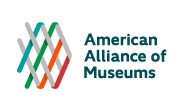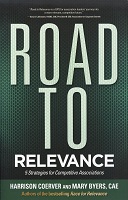 The American Association of Museums recently changed its name to the American Alliance of Museums.
The American Association of Museums recently changed its name to the American Alliance of Museums.
What’s in a word? Quite a lot as it turns out. From the AAM’s website:
“The change from “Association” to “Alliance” may seem simple, but it embodies the organization’s primary mission as it grows into its second century.
“By definition, an alliance is an entity forged for the mutual benefit of all,” said Meme Omogbai, chair of the Alliance board of directors and chief operating officer of the Newark Museum in New Jersey. “That is the essence of the new American Alliance of Museums – to re-ignite an organization into one whose aim is to benefit all: our museums, the individuals who work in them and the communities they serve.
“With the adoption of the Alliance strategic plan in 2009 – dubbed ‘The Spark’ – the organization systematically surveyed the range of its membership to determine how it could best serve America’s museums. This feedback informed an entirely new museum membership structure and a new Continuum of Excellence. Details for both the three-tiered membership structure and the Continuum of Excellence are available on the new Alliance website (www.aam-us.org).
– http://www.aam-us.org/about-us/media-room/the-association-is-now-the-alliance
The new museum membership structure reflects the Alliance’s belief that it needs to be more inclusive. Uniting the field is a priority. Among the changes they have created a basic membership tier designed for the thousands of smaller institutions in the U.S. to “pay what they can,” mirroring the inclusive policies and practices of museums large and small to promote community access and build audiences. They have also created what they call the Continuum of Excellence, a mark of distinction obtained through accreditation. This process has also been designed to encourage wider participation, with the goal of both building membership and promoting the credibility of museums generally to both government and the public.
In my view the most profound impact of the name change is in the word itself. “Alliance” presumes an agreed upon agenda serving common interests. It’s an active word. Allies do things. They have loyalty, a common purpose and they work together where they have a common goal. For associations, while they may do exactly that in practice, or aspire to, the word “association” is much more passive, bureaucratic sounding. It conveys credibility via status (“Look, we’re an organization!”) instead of action.
The AAM name change is an excellent response to shifting economic and political forces. American museums, like others in the arts and culture sector, need to strengthen their presence, which requires better, more professional and effective advocacy.
In Canada, associations in the arts face challenges that name changes alone cannot address. After a period of unprecedented government support over the past five decades – the exception being that terribly dark period in the mid-90s – representative associations in Canada have grown in number and size. Within the past few years however, the federal government has been rolling back its support. Through the Canada Revenue Agency, it has sounded warnings about active lobbying, casting a shadow across a role that many associations, and in particular their members, assume to be their primary purpose. The federal Department of Canadian Heritage last year de-funded the Canadian Conference of the Arts, whose historical raison d’être was to advocate on behalf of the arts. Last year the Department also reconfigured how it supports the Canadian Museums Association, moving them from operating to project-based funding, forcing them to run harder after less money.
Both moves suggest that government wants to get out of the business of funding representative organizations in the arts. They may well be looking for comparison at other industries where it is much more common for businesses and individuals to finance their organizations out of their own pockets. Notwithstanding the policy pros and cons of change in government’s approach, it is a model worth considering: independent financing gives representative organizations a degree of autonomy that is both liberating and energizing. Members expect to their organizations to get them somewhere when they are personally paying the fare.

But government funding is only one, and possibly the least, of the challenges facing Canadian associations today. The Canadian Society of Association Executives recently sent an email with the provocative subject line: Will Your Association Still Exist in 5 Years? The email was announcing a new publication, Road to Relevance. While changing an association’s name is not likely to be included among the five strategies for relevance identified in the book, becoming more effective by actively aligning communities of interest in the way the AAM is doing, must be.